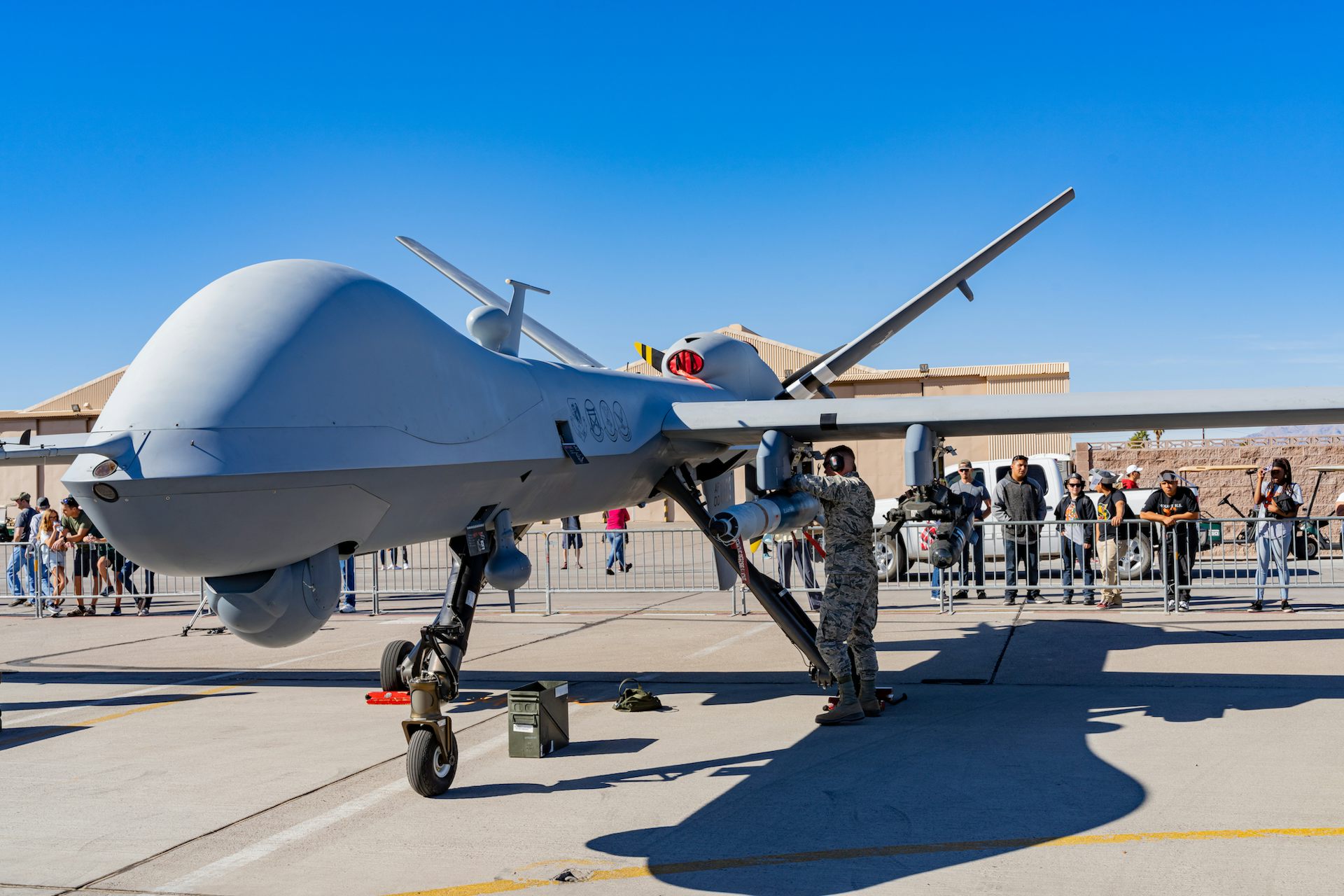
The recent killing of senior Iranian general Qassem Soleimani has been widely reported as conducted by an MQ-9 Reaper drone. But what does such an operation actually involve? While the ultimate decision to carry out the attack has clearly been placed with the Trump administration, much of the reporting and commentary has still bought into the misleading idea that drones enable instant killing using machines that take away the risks and responsibilities of warfare from military personnel.
The US and other militaries that use attack drones are generally very secretive about their operations, adding to the lingering false perceptions. As such, no official statements have confirmed the use of the Reaper in this instance, although several reports include quotes from unnamed government sources that do so. However, a drone strike seems likely in this case because of the precise nature of the attack, and the Reaper is the only publicly known attack drone now operated by the US military.
I spent two years working with two RAF Reaper squadrons to research the people who fly this aircraft. This included watching real-time lethal strikes alongside crews at Creech Air Force Base and RAF Waddington. It also included 90 interviews with people who work with Reapers. Based on what I learnt, here are the key things you need to know about how such an attack would probably play out, and the importance of understanding the role of human military operators.
First, Reapers aren’t launched at the touch of a button from thousands of miles away. It takes up to two seconds for a satellite control signal to reach a Reaper on another continent, so such a delay would cause crashes on take-off or landing.
Instead, the Reaper has to be taken off within the line of sight of a nearby launch and recovery pilot. This happens in or near the location where the drone’s mission will take place. Once the Reaper is safely airborne, control can be transferred to a crew thousands of miles away.
One report claimed that the drone used in the Soleimani killing “was overhead Baghdad airport” when its missile was launched. True, Soleimani was killed at Baghdad airport and a Reaper may have been orbiting the target area. But Hellfire missiles are not fired straight downwards, and nor does a Reaper hover like a helicopter or the smaller DJI Phantom drone.
The Reaper is an aircraft with a 20-metre wingspan. It is piloted using flight control surfaces like flaps and ailerons, which are moved via satellite signal. For a successful missile firing, the Reaper needs to be up to a few kilometres away from its target and then pointed towards it to create the right firing angle. The missiles typically take around 30 seconds to hit their target, depending on the launch height and distance.

Once a target is identified, it’s up to the human operators to launch the attack. Reapers are not autonomous, decision-making weapon systems that select victims or choose how and when to kill them. Soleimani was killed by a Hellfire laser-guided missile that may have come from a drone, but it would have been fired by a pilot in a ground control station located in the US.
Each missile would then have been guided by a sensor operator onto Soleimani’s car or his escort vehicle. This represents the final stage in a highly human operation. Sometimes we get the impression that the drone does it all. It doesn’t.
Not a video game
This is important to understand because drones are often portrayed as turning killing “into a video game”. But that’s not an accurate analogy.
At a purely ergonomic level, the controls of an MQ-9 Reaper drone are actually neither as sophisticated nor as sensitive as state-of-the-art gaming controllers. The MQ-1 Predator, on which the MQ-9 Reaper is based, was rushed into service after 9/11 and typical military aircraft testing and development was not carried out because of time constraints. As a result, the controls were not developed to be as user-friendly as they will be in the Reaper’s successors.
More important is the human dimension. When Reaper crews have followed someone for days or weeks, their target is not just pixels on a screen but a living human being. Operators watch targets spend time with family and friends and even playing with their children.
Crews, commanders and image analysts also continue to watch from above after a missile or bomb strike, conducting battle damage assessment. They see the bits of bodies being collected and taken for burial. They see grieving, devastated family members. And they know it is no game with a reset button.
As a result, operating a drone carries real risks. For one thing, terrorists have tried to target Reaper pilots and published a hit-list. But more prevalent is the psychological risk in repeatedly witnessing traumatising events and lethal strikes in close-up detail. A senior Reaper commander has described the impact of this as “far greater than it ever was with a manned cockpit”. These psychological effects are not yet fully understood but the risk is there.
As one sensor operator I interviewed said: “If anybody on the Reaper fleet says it doesn’t affect them, then they’re lying. It does. It has to.”
Remotely piloted aircraft like the Reaper will provide key air force capabilities for generations to come. For people to debate this technology in a useful way, they need to know what they can and cannot do. And understand that their governments are not using autonomous drones to kill random victims. Human operators are making life-and-death decisions with huge consequences for everyone involved.![]()
Peter Lee, Professor of Applied Ethics and Director, Security and Risk Research, University of Portsmouth
This article is republished from The Conversation under a Creative Commons license.

